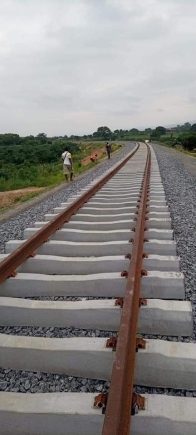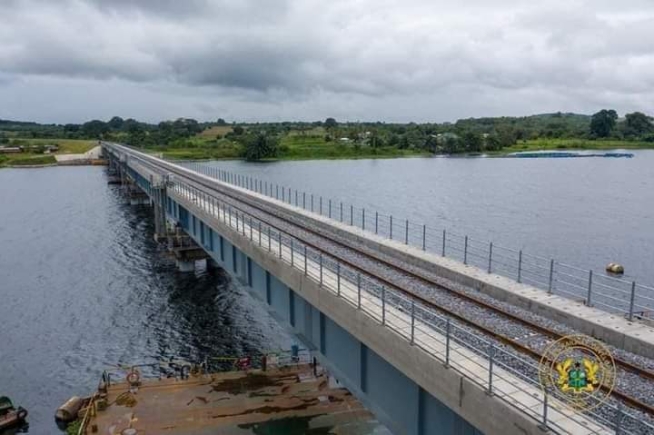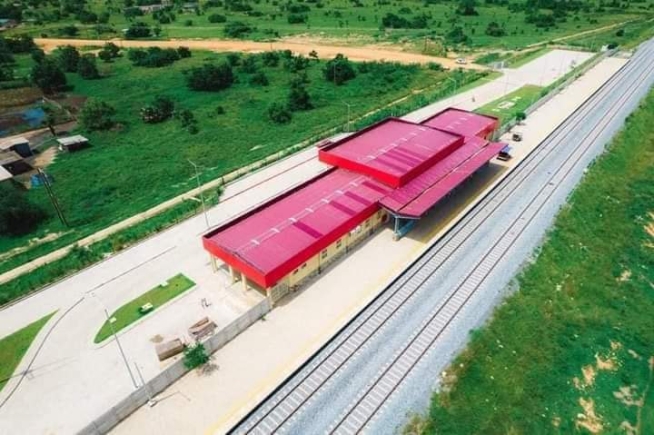
200 Kilometres rail lines built in 5 years
The government has in the last five years invested about $2 billion in the construction of over 200 kilometres of new rail lines across the country.
Advertisement
The $2 billion investment in the sector has accounted for the construction of the 97km Tema-Mpakadan railway line with about seven stations, the 80km railway line from Takoradi to Huni Valley via Nsuta and Tarkwa, as well as the ongoing six-kilometre double line from Kaase to Adum in Kumasi.

It also includes the 52 km Eduadin to Obuasi line and the 42 km line from Accra to Nsawam, both of which have been given to contractors.
The Chief Executive Officer of the Ghana Railway Development Authority (GRDA), Yaw Owusu, who has spearheaded the rail expansion and development projects, told the Daily Graphic that the new lines, all standard gauge, would last about 100 years.

He said for the first time, the country would have standard gauge trains running on its rail lines to mark the beginning of phasing out narrow gauge rail transport which has become outmoded.
Already, he said the government has procured two passenger trains from Poland at the cost of $4.2million to run on the Tema-Mpakadan line. The first of the two trains is expected to arrive in the country by March this year.
“The first train will arrive in the country by March and the Tema-Mpakadan line will be inaugurated by His Excellency the President, Nana Addo Dankwa Akufo-Addo,” he said.

Economic development
Mr Owusu said the country could ride on the back of an effective railway transportation system to boost its economic growth although about 75 per cent of the proposed 4,000km of rail network in the national master plan was yet to be constructed.
“It is incumbent to remind ourselves that we still have some catching up to do in our unrelenting quest to boost transportation infrastructure,” he said.
He said there was enough evidence that when properly tolled, the rail lines could pay for the huge investments needed to construct them as Ghana remains a transit route in the sun region.
He said aside from connecting the major cities of Accra, Kumasi, Sekondi-Takoradi, and Tamale; the use of Ghana as the route for transporting goods from landlocked countries north of Ghana, such as Burkina Faso, to the ports of Tema and Takoradi and also from the ports to the landlocked countries makes a strong case for prioritising railway development.
Beyond that, he said the presence of major mineral deposits of manganese, bauxite and iron ore along the route of the existing railway’s network; the potential to attract other bulk cargo such as cocoa, cement, mining equipment, and petroleum products from industrial enclaves in Tema to the eastern and northern parts of the country onto the rail network also make a case for the investment into the sector.
An Independent Marine Logistics Consultant, Yakubu Issifu Tanko, told the Daily Graphic in an interview that the development of the rail sector could stimulate growth in all sectors of the economy but could be particularly beneficial for freight or cargo services.
He explained that with the cost of the 97km railway line from Tema to Mpakadan costing $500 million, and additional expenditure for Mpakadan port, river barges and handling equipment at the port at about $5 million for the government and about $120 million for private investors, cargo freight alone, at an estimated GH¢50 per ton, could take in GH¢5 million each month assuming if 100,000 tons of cargo were moved by rail.




